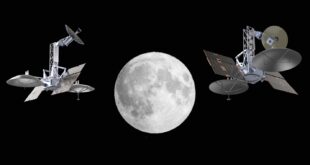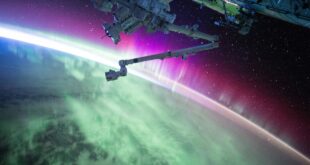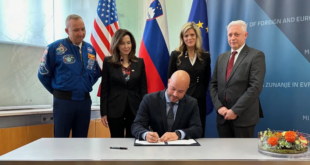By Michael Davoren

STEM and Space education is crucial for the future of our world. The workforce of the future needs to be inspired and see a career in space as a viable opportunity. Seen as viable not just by young people but by parents, teachers and industry. Inspiration is key and the best way to inspire is to engage. That’s what STEM and Space education organisation One Giant Leap Australia does best.
OGLA is focused on the advancement of STEM education and careers, providing life opportunities for students and educators to develop and build their knowledge and understanding of Science, Technology, Engineering and Mathematics. The development of a fully equipped future workforce requires a diverse and dynamic set of skills that will meet the needs of employers within Science, Technology, Engineering and Mathematics (STEM) industries. One Giant Leap Australia builds and maintains student interest in STEM while monitoring the changing industry requirements and providing innovative programs to meet those needs. We include parents, educators, community, industry and all levels of government working toward achieving a strong STEM sector.
Our aim is to provide an amazing opportunity that encourages rich and authentic play with a foundation in STEM.
Since 2008, One Giant Leap Australia (OGLA) has forged strong working relationships and partnerships with a range of educational institutions and providers; local, state and national government agencies; STEM-based companies; aeronautical and astronautical researchers and scientists and other community-based organisations. Now OGLA has joined the ELO2 Consortium to deliver the Little Dipper Challenge.
ELO2 is developing a preliminary rover design for the Australian Space Agency’s Moon to Mars Trailblazer program. Trailblazer is a partnership with NASA to develop a rover that will collect and transfer lunar regolith (Moon dust) to a special facility to turn it into oxygen. The oxygen can be used for astronauts to breathe in space, and it can also be used as fuel for rockets and other spacecraft. The result being that we will be able to establish a long-term presence on the Moon and explore space further than we ever have before.
ELO2 is an experienced consortium co-led by EPE Trusted to Protect and Lunar Outpost Oceania with 14 partners that bring Australia’s top talent and expertise across space research and industry to deliver what could be Australia’s first lunar rover. The goal is to make the most of this opportunity to capture the imagination of the Australian community and excite kids to have fun with science. “This challenge will engage primary school-aged kids and get them interested in space,” said EPE’s Director Innovation and Commercialisation, Ben Sorensen. “Australia’s future prosperity in space depends on our kids, and also that a good bunch of them get inspired to choose a STEM pathway from an early age.”
Landing an Australian rover on the lunar surface will highlight the kind of space and STEM endeavours that children can aspire to, creating a ‘where were you’ moment that hasn’t been seen since Australia played a crucial role in helping NASA bring TV images of the first Moonwalk to the world in 1969.
“The challenge is teacher and parent-friendly- it’s written so students can have fun and learn about what lunar regolith is, and the reason why we are returning to the Moon.” says OGLA Education Outreach Manager, Jenna McCarthy. “In the challenge there are videos of engineers from the ELO2 team that explain the concepts behind the lunar rover- they do an excellent job of describing rover designs for students, and it gives them an opportunity to see the people working on this ground-breaking design.”
Starting STEM education as early as possible is the idea behind the new challenge from ELO2. Drawing on the educational expertise of One Giant Leap Australia with outreach programs, the ELO2 Little Dipper Challenge invites children aged 5-12 years old to experiment with common materials found at home or school in a creative project about space. The mission is to build and test a scoop, like the one that will be on the Australian lunar rover, to collect soil from the Moon.
Running until 1 March 2024, young people participating in the challenge will learn from ELO2 engineers about the Moon’s environment and what it takes to design and test their inventions. By using everyday materials like Lego, recycled plastics, cardboard, and ice cream sticks, primary school aged children can create and test their very own scoop designs in homemade lunar regolith (Moon dust). “We are using an online platform so the challenge is accessible to any child across Australia. The Little Dipper Challenge aims to encourage kids’ creativity and help inspire our younger generation to learn more about science and space exploration,” said Joseph Kenrick, Program Manager at Lunar Outpost Oceania.
Australia’s future prosperity in space depends on our kids.
Jackie Carpenter says, “Our aim is to provide an amazing opportunity that encourages rich and authentic play with a foundation in STEM – a vitally important building block that enables children to engage. Harnessing an interest in STEM is important in early learning and school years. In fact, some students lose interest in STEM by age 6 and gender biases are formed at age 4.”
The challenge is open to everyone and can be found on the consortium website (www.elo2.au). It can be done at home with parents, at school, with friends, and in school holiday programs. Participants will receive Certificates of Completion and potential for their project to be featured on ELO2 social media platforms.
More information can be found at: www.elo2.au/little-dipper-challenge and www.onegiantleapfoundation.com.au/little-dipper-challenge.

Michael Davoren works as a Media Producer with One Giant Leap Australia Foundation. Michael is also the host and producer of One Giant Leap Radio, the organisation’s in-house podcast. The podcast features interviews with various space professionals from around the world, bringing the growing space sector to students’ ears in Australia and around the world. The podcast is also recommended by the Space Foundation in Colorado as a teaching resource. Michael found his way into the space arena as a communicator following his extensive experience as an actor and media professional, a transition which itself highlights a key message of One Giant Leap Australia; that the space industry requires diverse skill sets for the space workforce of the future.
 SpaceWatch.Global An independent perspective on space
SpaceWatch.Global An independent perspective on space




